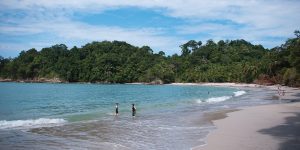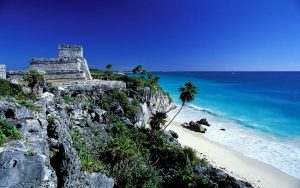So, you’ve decided to embark on a voyage to Antarctica? Congratulations! For your next step, you must now decide when to travel to Antarctica. Our Travel Specialists shed some light on what makes each season different, so you can decide which is the right month for you!
For six months of the year outside the Austral summer, it is nearly impossible to get to Antarctica due to freezing temperatures, months of complete darkness, and pack ice. The tourist season runs from October through to March, with each month having its unique charms.
Early Season (October to November)
The colder early season temperatures have their pros and cons. On the one hand, there is the possibility of some areas being off-limits due to heavy ice floes. But on the other hand, this is a chance to see Antarctica at its most pristine. You’ll see plenty of icebergs and crisp white snowscapes – it is a photographer’s dream! Not to mention, this is the most affordable time to visit. From October onwards penguins begin their return and start to build their nests. Their courtship rituals begin; come November, you may even be able to spot an egg or two nuzzled beneath a penguin. Whales begin to return to their feeding grounds although they are not as prominent as later in the season. Deep snow in some landing sites can mean some landings can be challenging, so remember your trekking poles.
Peak Season (December to January)
During the peak season, the days are at their longest, meaning more sunlight and warmer daily temperatures. You are unlikely to have any sea ice issues stopping you from accessing anywhere. The ocean is full of life with whales feeding, penguin colonies buzzing with chicks as they hatch, and parents feeding their hungry young. As temperatures rise snowmelt means trekking poles can be handy for negotiating slippery shores. A downside is that peak season voyages are the most expensive. And coupled with the fact flights to Argentina around the Christmas and New Year period are also higher than usual – it pays to book far in advance for this popular time of year.
Late Season (February to March)
By this time the feeding frenzy of summer has died down. Prices are a little cheaper than during peak season. However late season cruising means you’ll be walking over a season’s worth of landing sites. So once pristine icy shores can become mucky, you should expect rocky and muddy landings. Most adult penguins finish moulting and begin taking to the sea; watching these first cautious steps and learning to swim is a remarkable thing to witness. This is the best season to observe whales; however, other wildlife may have already headed out to sea. Come the end of March the days are markedly shorter, the temperature begins to drop, and the sea ice begins to build up again, marking the beginning of winter.
Now you know when to visit Antarctica, and which places to visit in Antarctica. However, you probably have many more questions. Let our expert travel advisors answer all your queries and create a perfect itinerary for you. Call us in and let us tell you about the options we have in store for you!
























































